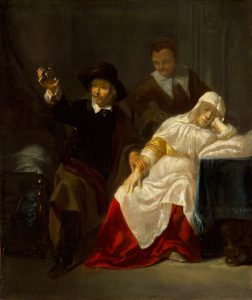Observation is an essential clinical skill. Best practices in patient care depend upon a comprehensive approach to the patient which requires the physician to attend equally to the biomedical domains of the patient’s disease, and also to the patient’s unique psychological and socio-cultural circumstances and experiences. In addition to observing and interpreting these aspects about the patient during the patient/physician encounter, the physician must be skilled in self-observation about his/her responses to the individual patient. In short, good doctoring requires multiple skills in observation. Improving the physician’s ability to “see” the patient in these ways enhances patient care.
Observation is an essential skill in working with the visual arts. Parallel to the physician’s need to see more than a patient’s physical condition, to understand a work of art fully, the observer must take everything under consideration from the physical qualities of the object to the artist’s personal and professional history. And that history in turn is influenced by the time period and culture in which the object was made. Improving the viewers’ ability to “see” a work of art from multiple dimensions enhances their understanding and potentially, appreciation.
The Five Question Protocol emphasizes a systematic approach to looking at and interpreting works of art. The session is led by a facilitator, trained both in guided-inquiry practice and the selected art works. The role of the facilitator is to create an environment that will encourage candid conversations in the small group, whether the participants are meeting for the first time, such as medical students during their first week of medical school, or long-time colleagues in the same departments. The potential for meaningful dialogue begins with the participants’ collective focus on the same work of art and not on each other. Vital to facilitating these discussions is the facilitator’s non-judgmental stance, enhanced by skilled reflective listening.
The facilitated activity involves: 1) looking silently at a work of art; 2) naming what participants have seen; 3) sharing information—prior knowledge—that participants might have with components in the work; 4) proposing an interpretation based on observation and prior knowledge; 5) asking questions to confirm interpretation; and 6) summarizing thoughts about artwork and reflecting on the process.
